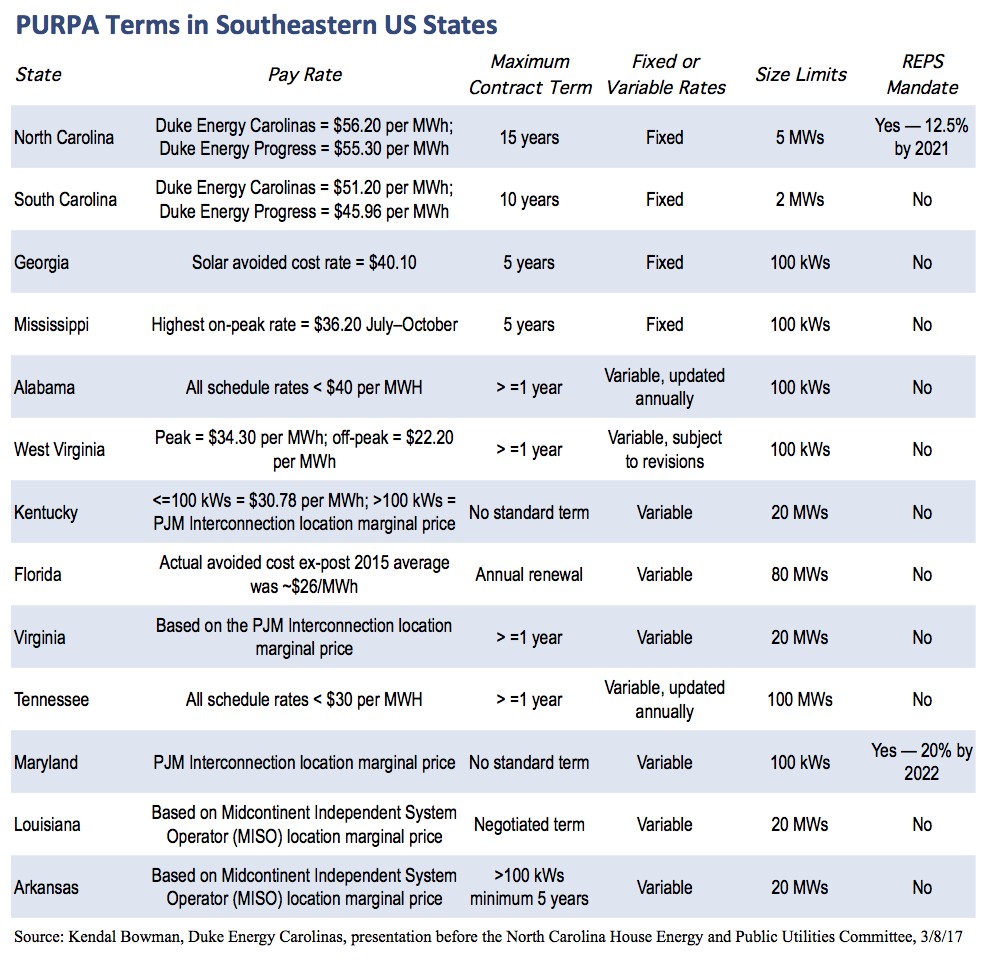Big news out of Montana, one state that had (past tense) worse PURPA compliance policies than North Carolina’s:
Montana’s Public Service Commission … reduced rates paid under the Public Utility Regulatory Policies Act of 1978 by 40%, according to the Billings Gazette, and trimmed contract lengths from 25 years to five years with an option for another five years.
I hope the N.C. Utilities Commission, the General Assembly, and the Public Staff are paying attention. North Carolina’s PURPA compliance policies are a significant and growing problem. North Carolina has the highest rates and the longest contract terms of any state in the Southeast, along with other public policies that are disproportionately favorable to solar energy facilities.
If House Bill 589 passes, it would make important reforms to North Carolina’s PURPA contract lengths and qualifying facility sizes — but it would not change how avoided-cost rates are set.
Avoided-cost rates are the PURPA contract rates, and HB 589 would use those rates as the cap on renewable energy facilities’ bids to contract with Duke Energy, contracts that would be awarded to either 93 percent (Senate version) or 100 percent (House) of them.
Here’s the point
How high N.C.’s avoided-cost rates are set will make a huge difference in how HB 589 ultimately impacts consumers. But right now, North Carolina has the highest avoided-cost rates in the Southeastern U.S. by far.
So bringing North Carolina’s avoided-cost rates more in line with surrounding states’ would help consumers greatly (for more explanation, see the discussion under Part II here).
Regardless of the HB 589’s outcome, Montana’s public service commission just showed that major PURPA reforms protecting consumers can be made without legislation.
Plain and simple, North Carolina’s exorbitant avoided-cost rates need to be brought more in line with surrounding states’. When ours are 10–20 percent higher than the next most expensive state’s, costs are clearly way out of balance.



